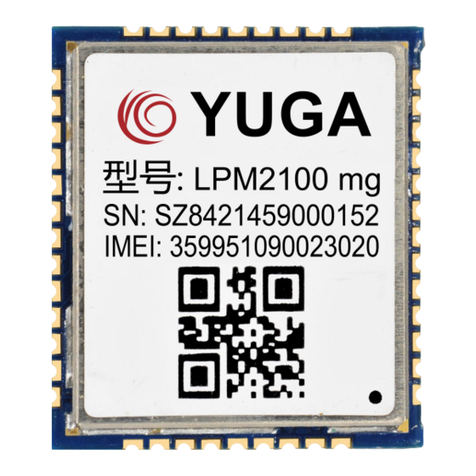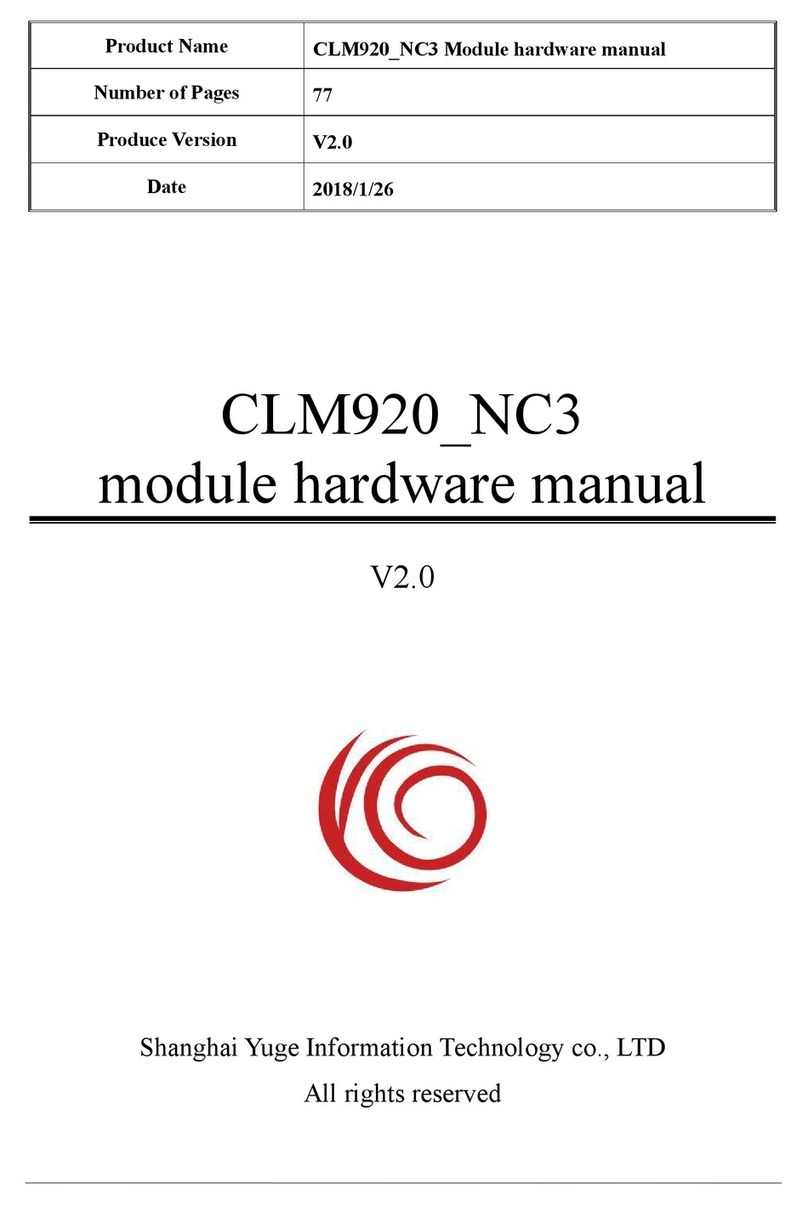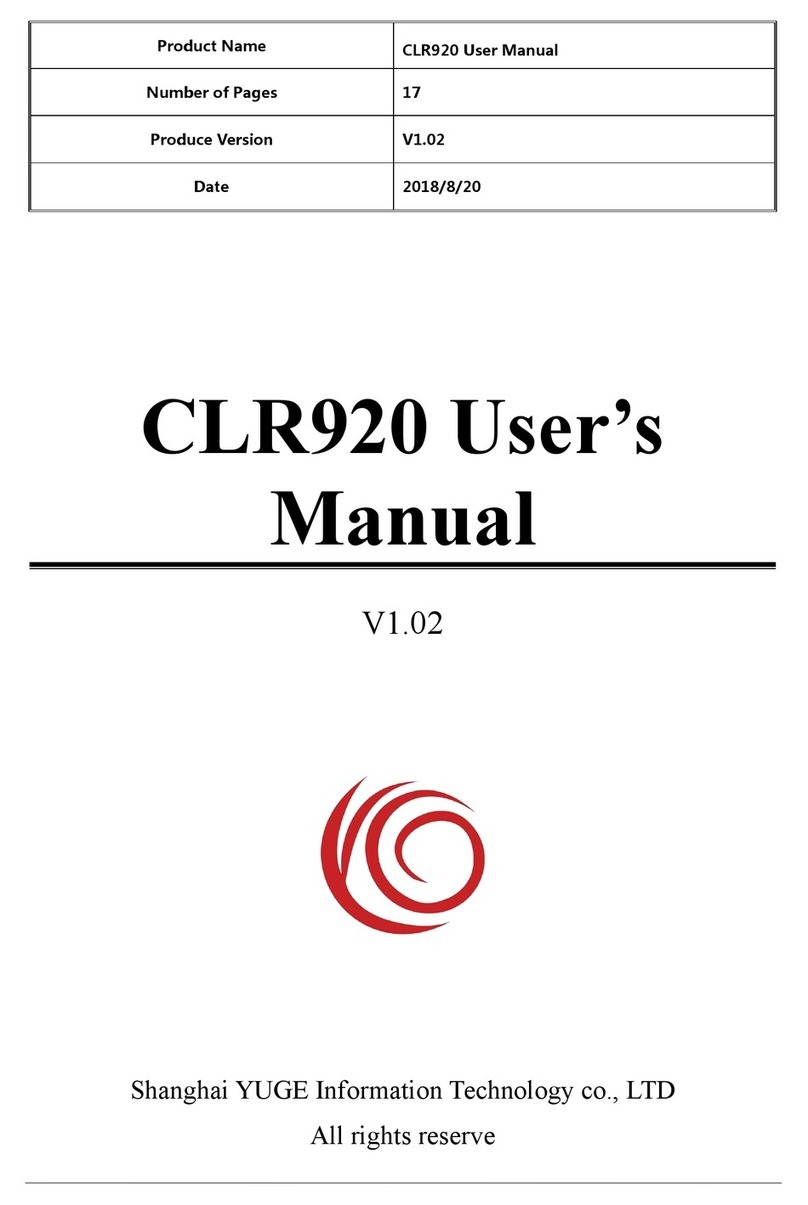
CLM920 TD3 LTE Module Hardware Usage Guide
Shanghai Yuge Information Technology co., LTD
3.13 SDIO interface......................................................................................................- 46 -
3.14 SPI interface / multiplexed I2S interface..............................................................- 51 -
3.15 MCLK interface....................................................................................................- 52 -
3.16 WLAN interface................................................................................................... - 53 -
3.17 SGMII interface....................................................................................................- 54 -
3.18 ADC interface.......................................................................................................- 56 -
3.19 RF interface.......................................................................................................... - 57 -
3.19.1 Main antenna interface.............................................................................. - 57 -
3.19.2 Diversity antenna interface........................................................................- 58 -
3.19.3 GNSS interface..........................................................................................- 58 -
3.19.4 RF trace reference......................................................................................- 60 -
3.19.5 RF connector size...................................................................................... - 61 -
Chapter 4 Overall technical indicators................................................................................. - 63 -
4.1 Chapter overview....................................................................................................- 63 -
4.2 GNSS reception performance.................................................................................- 63 -
4.3 Working frequency................................................................................................. - 64 -
4.4 Conducted radio frequency measurement.............................................................. - 65 -
4.4.1 Test environment......................................................................................... - 65 -
4.4.2 Test Standard............................................................................................... - 65 -
4.5 Conducted receiving sensitivity and transmit power..............................................- 65 -
4.6 Antenna requirements.............................................................................................- 67 -
4.7 Power consumption characteristics........................................................................ - 68 -
Chapter 5 Interface electrical characteristics........................................................................- 72 -
5.1 Chapter overview....................................................................................................- 72 -
5.2 Working storage temperature..................................................................................- 72 -
5.3 Module IO level......................................................................................................- 72 -
5.4 Power supply.......................................................................................................... - 72 -
5.5 Electrostatic property..............................................................................................- 73 -
5.6 Reliability index..................................................................................................... - 73 -
Chapter 6 Structural and mechanical properties...................................................................- 75 -
6.1 Chapter overview....................................................................................................- 75 -
6.2 Exterior................................................................................................................... - 75 -
6.3 CLM920 TD3 Module mechanical size................................................................. - 75 -
Chapter 7 Packaging and production....................................................................................- 78 -


































